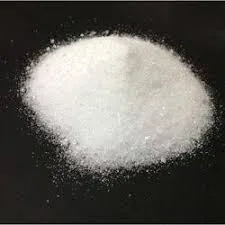The Viscosity of HPMC Understanding Its Importance and Applications
Hydroxypropyl methylcellulose (HPMC) is a versatile synthetic polymer that has gained significant attention in various industrial and pharmaceutical applications. One of the key characteristics of HPMC is its viscosity, which plays a critical role in determining its functionality in different formulations. This article will delve into the nature of HPMC viscosity, the factors that influence it, and its importance in diverse applications.
Understanding HPMC Viscosity
HPMC is derived from cellulose, a natural polymer, which undergoes chemical modification to enhance its solubility and functionalities. The viscosity of HPMC is a crucial property influenced by several factors, including its molecular weight, concentration, and the degree of substitution of hydroxypropyl and methyl groups. In general, higher molecular weight HPMC grades exhibit higher viscosity due to a greater number of entanglement points between polymer chains. In contrast, lower molecular weight variants provide lower viscosity levels, suitable for applications requiring fluidity and easy application.
The viscosity of HPMC solutions is typically measured at various temperatures and concentrations, giving valuable insights into their behavior under different conditions. This measurement is pivotal for its use in industries ranging from pharmaceuticals to construction.
The Role of Viscosity in Pharmaceutical Applications
In the pharmaceutical field, the viscosity of HPMC is particularly important in the formulation of medications. HPMC is often used as a binder in tablets and as a thickening agent in liquid formulations. The viscosity influences the flow properties of the mixture during manufacturing, which can affect the uniformity and stability of the final product.
For oral suspensions, the viscosity of HPMC ensures that the active ingredients are evenly distributed and remain suspended, thus enhancing bioavailability. In topical formulations, a suitable viscosity contributes to the spreadability and adherence of the product to the skin, ensuring proper application and therapeutic effects. Moreover, viscosity is crucial in controlling the release rate of drugs; for sustained-release formulations, higher viscosity levels can slow down drug release, providing a prolonged therapeutic effect.
hpmc 200000 viscosity

Construction and Coating Applications
Apart from its pharmaceutical uses, HPMC viscosity is also significant in the construction industry. HPMC is widely employed in cement-based materials, such as mortars and plasters, due to its thickening and water-retaining properties. The viscosity of HPMC solutions directly affects the workability of these materials, ensuring that they can be applied smoothly and evenly. It also aids in improving adhesion between the substrate and the applied materials.
In the coatings industry, HPMC acts as a thickener and stabilizer, influencing the viscosity of paint and coatings. The control of viscosity is essential for achieving the desired application properties, such as flow, leveling, and drying time. A stable viscosity allows for a uniform application while preventing issues such as sagging or running.
Factors Influencing Viscosity
Several factors can influence the viscosity of HPMC solutions. Temperature is a critical variable; as temperature increases, the viscosity generally decreases due to reduced intermolecular interactions. Conversely, changes in concentration can significantly alter viscosity. Higher concentrations lead to increased viscosity due to more substantial polymer-polymer interactions and entanglements.
The degree of substitution in HPMC, or the ratio of hydroxypropyl to methyl groups, also impacts viscosity. Formulations can be tailored to achieve specific viscosity profiles by adjusting these parameters, allowing for customization in various applications.
Conclusion
In conclusion, the viscosity of HPMC is an essential property that determines its performance across numerous applications. Whether in pharmaceuticals for effective drug delivery or in construction for enhanced material performance, HPMC’s viscosity plays a pivotal role. Understanding and controlling this viscosity is critical for formulating products that meet the required specifications and functional purposes. As industries continue to innovate and demand more versatile materials, HPMC's adaptable viscosity will remain a fundamental factor in its widespread use and effectiveness.
-
The Application and Significance of Construction RdpNewsMay.19,2025
-
Industrial Grade HpmcNewsMay.19,2025
-
Building Coating Adhesive Building Coating Adhesive HpmcNewsMay.19,2025
-
Application Of Hpmc For Detergent For Detergent In DetergentsNewsMay.19,2025
-
Application Of Hpmc Cellulose In Cement-Based MaterialsNewsMay.19,2025
-
Application Of High Quality Hpmc For Construction In The Field Of ConstructionNewsMay.19,2025




